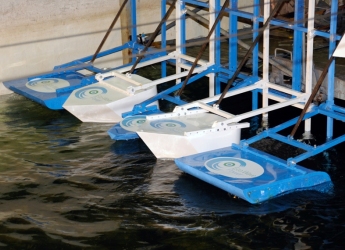
Eco Wave Power, a designer and manufacturer of the EWP
wave energy convertors, announced the completion of the construction and
testing phase of its first sea wave energy generation models known as
“Wave Clapper”, and the “Power Wing”.
All the experiments were monitored by officials from the
Hydro-Mechanical Institute and the tests results were determined successful.
The Protocol submitted to Eco Wave Power, by the
Hydro-Mechanic Institute, has concluded the experiments as following: “All
floaters of Eco Wave Power Company have proved their workability… According to
the results of the tests, we have reached a decision to recommend continuing
the development of the green energy generation system that is based on
such principles, and enlarge the model to greater sizes.”
The Eco Wave Power’s
system uses low cost materials, needs low maintenance prices and low
maintenance periods and it will produce electricity for a cheaper price than
traditional energy generation methods such as coal, gas and oil and also
cheaper than renewable energy generation methods such as wind or solar.
The company has already secured funding for three ocean
energy generation models, the last of which will be a full-size commercial
scale power plant, with the ability to supply electricity to at least 1000
households.
“We are a young and innovative company in the field
of ocean energy. As a result, we believe in a fast, yet reliable, progress. Our
competitors in the ocean energy sphere had spent 5 to 15 years researching the
ocean energy field, resulting with no commercial scale devices available for
sale and implementation. We want to be different. We want to be able to offer
our commercial scale devices within the shortest time frame, and for the most
attractive prices,” said
David Leb, the founder of the company.
In another research program, Danish engineers recently
demonstrated
a wave-energy conversion device that is able to adapt its structure from calm
to rough seas.
The Weptos device expands on the ‘Salter’s Duck’
principle of wave generation, devised in the 1970s by the eponymous Scottish
engineer, which uses ‘bobbing’ tear-shaped buoys.
By GreentechLead.com Team
